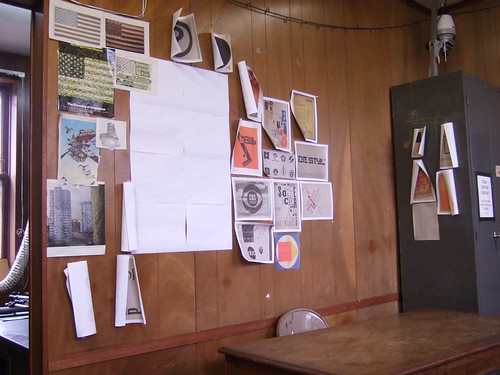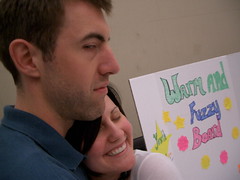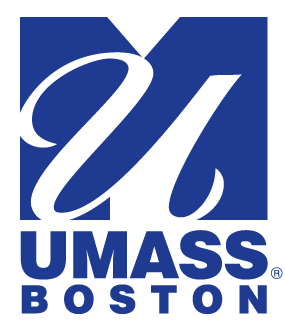Connect The Disconnected Conference!
Connect the Disconnected, a new project started by Richard O'Bryant of Northeastern University and MassIMPACT board member, hosted a one-day conference on Saturday June 9th, 2007 entitled "Empowering Communities through Electronic Information Access: Public Policy and Effective Community Practices." This free one day conference focused on opportunities, resources and strategies for bringing information technology to under served communities. It had a relaxed format of panels, discussion, and digital storytelling screening. We had a great mix of community activists, CTC VISTA members, housing development technology staff, and larger nonprofit organizations focused on this work. Below are my notes on the panels with several great quotes from experts and on-the-ground workers alike.
Panel 1:
- Susan O'Connor - The Timothy Smith Network / Open Air Boston / Tech Goes Home
- Gail Breslow - Intel Computer Clubhouse
- Theresa Ellis - Common Impact
- Milton Irving - One Economy
Richard O'Bryant, Northeastern University, acted as the panel facilitator and started the panel by citing that studies have shown that low income communities currently lack substantive social/political capital. He asked how are members of this panel addressing this issue, using technology as a tool.
Susan-
Timothy Smith Network is 40 organizations in greater Roxbury, housed in social service agencies that has served over 14,000 individuals, youth to seniors. Their programs include standard computer literacy (job skills) and multimedia programming, with partnerships such as an astronomy program with MIT and a robotics program with Northeastern to do projects that encourage social justice purpose. The Network has the goal to make it easier for people to come to the network and provide opportunities to "take the technology and max it's effectiveness on multiple levels."
Gail -
The Computer Clubhouse approaches technology as a vehicle or medium to express their own interests and meet their own needs. It's a program started 15 years ago at Computer Museum with the MIT Media Lab, and now it's 108 Clubhouses in 24 countries. It serves ages 10-18 from low-income communities to come do digital media projects to express themselves with the help of adult mentors. The unique learning approach because of idea to help young people to experience the joy of learning; to reconnect with joy of learning as young children. It attracts many aspiring graffitti and hip hop musical artist members. They know that community engagement needs to start with where members are at; so the Clubhouse is a place where youth have ownership of the experience and develop skills for future careers.
Theresa -
Since social responsibility in the private sector is a big topic, Common Impact strives to strengthen community based organizations by leveraging human/individual capacity. They ask of nonprofits, "how do you build the back office to remove barriers to make your programs more accessible?" through a 3 step process:
1. perform a technology needs assessment
2. write a road map / plan with technology based goals
3. bring in team of volunteers from a partner to achieve one of the goals (average worth of $40K)
There is an actual sensibility that private companies need to be able to measure and assess their work in the community: "Most interesting output of these projects is that people meet each other...50% of volunteers stay involved with the nonprofits after the initial project"
Milton -
One Economy helps low income people understand the power of technology through the internet, in several ways:
- Access thru broadband
- Online content - what the is food for this internet superhighway? Such as the Beehive (education, health, financial literacy) or Town Hall 24/7 - civic engagement website launching next week; launching next week in New Orleans.
- On-the-ground work - physically get housing developments wired and provide equipment, combine with training for youth and residents
- One Global Economy - international initiatives
- Bring IT Home - 50 different agencies that deal with affordable housing, change existing policies in ways to provide more affordable access to technology
The panel then tried to answer some larger questions:
How does policy play in role in connecting the disconnected?
Susan - Timothy Smith wouldn't be possible without the policies of Boston; the thinking that went into that was creating funding until 2019 to support these types of initiatives; commitment to programs such as Technology Goes Home, where participants get a non-interest bearing loans to purchase a computer for the home; also Mayor Menino is big on internet safety, such as partnering with Microsoft to provide iSafe programs to Boston Public Schools. Also, there's the Open Air initiative that the Boston wireless access will be totally privately funded, but it's starting in Roxbuy, which is where the people who really need the low cost internet access but there needs to be some outreach to convince people that they NEED this type of access in their homes. Check out an article in today's Boston Globe about rollout - http://www.boston.com/business/personaltech/articles/2007/06/09/hubs_wif...
Milton - It starts with education, around the marketing potential and purchasing power of people in places such as public assisted housing, for larger corporation. "It's not about being good, it's about good business...but it's about the power in those numbers."
How can we further prove to companies that there's possibility and benefit to working toward this goal?
Gail - It's about opening companies eyes to the possibilities. For example Adobe was at first hesitant to donate software because they thought it'd be too advanced for youth in the Clubhouses to use. After a short period of time of members using the software, Adobe visited and was amazed at the youth's progress with the software and the creativity of projects produced.
Theresa - "You have to be able to translate the message...and speak to things that respects what both the nonprofits and for profits bring to the table." There is a benefit of increased creativity of employees by placing them in volunteer situations at nonprofits, and for profits need to be made aware of that.
Even if we get the computers, we need bring in people with the skills to teach the community members how to use the technology. How do we get there? Lois Lee - (United Granite Church in Grove Hall neighborhood)
Susan - There is a myth that says that the digital divide has been closed, but there is really still a need to provide physical tools for access. But there's also more awareness among corporations and private citizens that there's a threat to data security if they donate used hardware, so this creates a barrier for computer donation for refurbishing. Also, there's the idea of "Better Living Through the Internet." There needs to be more education for community members about how the internet can be used to help them choose the right healthcare, to get food stamps, and even for homework help for their children.
There has been a lot of emphasis on youth programs...what about adult learners, such as ESL and learning disabilities in DOE sponsored programs? Where is the connection between adult education and community development?
Gail - There is a learning approach used in the Computer Clubhouse is applicable for people of other ages as well. The Clubhouse engages adults as mentors for the youth, but the youth tend to know more about the technology. Volunteers at the Clubhouse have had their own lives transformed by their work with youth and an expansion of their creativity. Barriers to the use of technology can be broken by creating learning experiences with new motivations to create.
What are you doing around technology for those with disabilities? And educating trainers in these community technology centers around these issues?
Milton - Through partnerships with agencies and city mayoral offices, we ask social service agencies how can we use the internet to better serve your clients. These developed tools need to be adapted for the specific constituents.
Another resource may be the Adaptive Environment Center has a background in universal design in architecture and American Disabilities Act - they might have resources for community technology.
How do we address language barriers? Especially with the parents of youth who don't speak English?
Gail - There has been a challenge to involve parents of Clubhouse youth that don't understand the work their children do each day in the Clubhouse, both because of their language and technology literacy. The Clubhouse has had success by having recognition events for the youth and inviting the parents to come celebrate their children. "It's relationship building, it's the start of something that can grow from there when you can look them in the eye." The added benefit in the Boston Clubhouse at the Museum of Science is that it brings adults, who may have never thought of attending the Museum, to a new learning experience of their own.
Richard - An issue with literacy of ESL adults is that they might not have literacy in English, but also not in their native language as well. The problem needs to be addressed from a larger adult education perspective.
How do we get parents more involved with their children's homework using technology? - Antonio (Humboldt Tech Center staff)
There are sites and software such as MyBPS - through Boston Public Schools site and Power Schools - an online utility for student management that sends text message to parents with homework. The challenge is to get the teachers and the school administration signed on to using these tools.
As we try to close the digital divide, how much more is there to go? Once we have the hardware, we do we go from there? - Chris Greer, SMS Housing Development, Roxbury
Milton - It's a tough question to ask if we're every going to be there? It's about people becoming self sufficient, not just the access but the destination point for information. The problem is that this point always changes, there are always new problems and changes.
Theresa - The question come back to equality, the gap between the have's and have-nots? How do you think about this problem from a larger the terms a policy standpoint?
The digital divide isn't going to go away, because the challenges change. For example, you can give them access to the internet, but then you have bandwidth issues. "They're online but they're not sufficiently online." There's also the issue of network neutrality. "Even tho we've been fighting all this time, to put technology in people's hands, there's another battle of who has control of what people have access TO."
Since we haven't heard much about policy from the federal level, does this mean that we should approach it from state level?
Milton - It's useful to start small, from the ground level, working within what's already in place, but then transforming it into something more feasible for the communities we serve.
Richard - Unfortunately, changes in the federal administration has totally changed the federal government's priorities. "We're setting ourselves up - other countries are investing in their infrastructure (China, India) to build up their capacity to compete with the US...but we're not doing the same to compete with them." But there are some pending federal bills in Congress about providing country-wide broadband access. We need to get a bill together to prevent "e-poverty."
What are the resources to give users the training to do their own IT support?
Susan - Buy computers with warranties, get anti-virus software or tap into youth "geek squads."
During their closing remarks, Theresa said to "think holistically in what you're doing and how you translate" and also to get out and vote. Milton advised we use youth as "ambassadors for change," to build more of a sense of trust and to get technology information to youth. As a wrap-up, Gail asked us to "aim high" because it's easier to think about the digital divide as an achievement that will "be done." Finally, Susan said the one thing she's learned is "that if you work together, a lot is possible...it takes checking your ego at the door...the people on the ground are willing to partner but the administration is not." She also said to "think asset based" - to not focus on negative violence statistics, but rather positive community assets such as buying power.
Panel 2
- Zach Goldstein - Common Impact
- Lanice O'Bryant - BirthName Productions
- David Pearson - Shawmut Education, Inc.
- Thaddeus Miles - MassIMPACT
Richard started this second panel with a question around what made the speakers passionate about connecting communities with technology.
Zach gave his perspective on the work of Common Impact through a story of success of an afterschool program in Roxbury of only 3 staff to serve youth struggling in school with only a $250k budget. Their challenge was processing evaluation data of their programs and track the progress of their students. They were matched with Fidelity employees who built a database that compiled trends and reports. Because of these reports, they were able to raise an additional $30K to develop new programs for some alumni that were falling through the cracks. He's passionate about Common Impact revolves around his discomfort as a software developer for a big company, working just for profit. He said his motivation is "being able to take my professional skills, knowing technology, and being able to give back to the community."
Lanice made the unique decision to reach out to young girls as she developed her how film company, . "[With each girl], I believe that she has the ability to do anything that she puts her mind to. I can bring out the beautiful aspects of these girls, but it really all starts with trust."
David related his passion to head Shawmut Education by asking "how can you impact a life [with technology] and then make impact on a broader community?"
Thaddeus spoke to the mission of MassIMPACT to create partnerships and bring people together. But that mission hard, especially with separately run housing developments, to get people to work together as a entity on the issues around connecting the disconnected. Right now the challenge is now not just putting the technology in the hands of the community, but working with them to relate the work they do every day to empower their members. Thaddeus said, "It's still US putting the communities' stories on the web, instead of them sharing them themselves. The drive still comes from MassIMPACT, rather than coming from the community organizations themselves."
How do we keep youth engaged with the technology? How do we continue to get the youth to apply themselves and open up about their issues/concerns?
Lanice said her first lesson learned running her program with girls is that "the technology HAS to work." Using a local school's technology center that hadn't been upgraded let to frustration on the part of the participants and facilitators. She also focused her curriculum on the learning styles of the girls of color, by using techniques of show and tell, avoiding a leader led style, and providing incentives such as food and public transportation passes.
She also said, after years of working with girls, she knows how to size them up after the first couple sessions. But she advised that you have to realize that youth in these programs are usually self selected - they have to be self motivated to choose to be in these types of programs, after long school days and MCAS study. But her staff continue to follow-up after every session to keep the girls engaged, through phone calls to parents and the youth themselves. In order to help girls finish their pieces, she said "I have to let my ego go, and get [the girls] to the finished project."
What are the challenges internationally vs. domestically?
When David tried to implement a technology project in Jamaica, he quickly saw the challenges of recruiting youth for technology projects where parents are afraid to send them to school and youth would rather be out in the sun outside. "I always try to balance what I'm trying to do and understand the culture." He also said his staff often decides to fix technology issues themselves, rather than finding other people to troubleshoot.
Where do we find a happy medium between controlling what youth are viewing/doing on the Internet and still providing a safe, but interesting space for youth to use technology?
Thaddeus - Addressing this problem has a lot to do with the comfort and skill level of the instructors and staff of technology centers. By just blocking or telling youth to get off sites like My Space or taking a more instructor led stance, it works in an immediate sense but not over time. Also, without other outside partnerships, the tech centers are limiting themselves of what they can know. As far as the youth, "It's about meeting youth where they're at...being to explore by guided exploration. We don't ask the youth enough what kind of programs they want." It takes getting kids involved in the process initially of creating a technology center, if they can participate in the planning, it will help alleviate the adults fears around internet safety.
How do we address the need for long term instruction in the tech centers? Are there training or resources available?
Thaddeus advised looking more into the Computer Clubhouse project-based model and aiming to really engage youth as leaders and actual staff trainers.
How do we get parents more involved?
Even though they recruit youth participants through the O'Bryant School or the Technology Goes Home programs, they really work hard at leaving messages and communicating with the girls and their families. They establish some value to participating by emphasizing that "your daughter is worth my time." You also have to approach working with the adults differently than you would with the youth.
What are the next steps for this movement?
Not only do we need to push for federal legislation, we also need to get more larger corporations involved and make this an issue around "public good and not just private good."
Antonio said we need to do more around educating community members, particularly housing residents and parents, to be more aware of the technology tools they already have (such as internet on cell phones and Sidekicks). The youth are very aware, and their parents have to keep up to understand the relevance in daily life.
Open Air Boston is running training (available as vignettes on the Timothy Smith Network's site) called "Breaking the Code" around how to text message and use MySpace for parents and adults in order, as part of a larger initiative to educate people around the value of the Internet. Technology centers can take this resource to teach their constituents how to use the internet to do every day tasks.
In the end, attendees agreed that the Connect the Disconnected initiative needs to keep the conversation going, whether it's online (website, blog, email listserv?) or in person, and take the conversations into the community and have the members participate in the discussion.











 Check out my appearance on a panel about changing the media on Cambridge's cable access station,
Check out my appearance on a panel about changing the media on Cambridge's cable access station, 











Comment from Laura Hanley on June 6, 2007 - 6:42pm
Find a doctor!! Seriously folks, I can't stress it enough. If you relocated for your project like I did, or even if not and you don't have a GP or a family doctor, find one you can go to should the need arise. http://americorps.sevencorners.com has a search tool (Provider Network link on the left navigation menu) that makes the process relatively simple, provided there are providers in your area. Always, ALWAYS call to double check any information listed...as I have found out - the hard way - is not always correct. Had I found a doctor when I got to San Diego, I wouldn't have spent 4 hours in a hospital for an ear infection, gone on a wild goose chase in search of an urgent care center that would accept our benefits (resulting in my going to said hospital), wasted precious gas, and saved myself tremendous amounts of frustration. (You can read about it here or here if you're interested in details.) But really, remember to eat, sleep, and take care of yourself so you don't have to see a doctor at all!